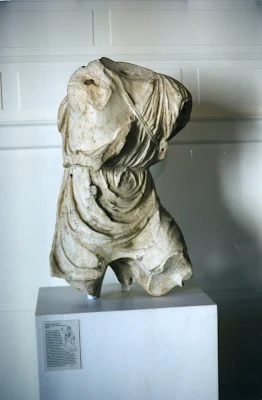
Sunday, December 5, 2010
Monday, November 29, 2010
Lost, found, missing... (one)
Probably because of the context of these photographs, they have a forlorn look to them. Family photographs become mug shots for the lost. Many of us know the archetype of being lost. I've been lost several times and wandered, perhaps in "circles" as they say, and it was a miserable experience. Here we have lost cats, dogs, people... how many are found? How many find new homes, or no home at all.
Monday, November 22, 2010
Thursday, November 18, 2010
Wednesday, November 17, 2010
Tuesday, November 16, 2010
Sunday, November 14, 2010
Thursday, November 11, 2010
Sunday, November 7, 2010
Roland Penrose on Joan Miró
"Miró’s . . . investigation of the world of dreams and the subconscious was made with the desire to approach, to use Herbert Read’s term, “the frontiers of perception,” regardless of the risks involved. There has never been any doubt in his mind that what is of real importance to him lies beyond painting. The degree of sheer visual pleasure that paintings give can be intense; but the more acute it becomes the more it is likely to provoke a further yearning, often ill-defined but of great strength, for a transcendental understanding of our condition. The work of art, then, as it leads us to the frontiers of perception, becomes the medium which can give access to new states of consciousness. In itself, though it remains the motive force, it becomes less important than the state of mind to which it leads. At the same time the artist himself also recedes into a condition of anonymity. “Anonymity,” Miró says, “allows me to renounce myself but in renouncing myself I come to affirm myself more strongly… The same practice makes me seek the noise hidden in silence, the movement in immobility, life in the animate, the infinite in the finite, forms in space and myself in anonymity.” Artists such as Miró, who have discovered through paradox that the finite statement of their work can b a gateway to a new perception of the infinite rather than an end in itself, accept the role of prophet, or rather seer. They become the intermediaries who, instinctively in the first place and later by their command of aids and techniques, can carry us with them into a more complete understanding of our human relationship to the great unknown, towards an accord between us and the nature of all things."
Roland Penrose, Miró,
Harry N. Abrams, Publishers, New York,
Pps. 193-194
Roland Penrose, Miró,
Harry N. Abrams, Publishers, New York,
Pps. 193-194
Monday, November 1, 2010
The Molson Mausoleum, Mount Royal Cemetery







Several of these photographs show the inside of the Molson mausoleum; however, no one entered the mausoleum, it was just a matter of putting the camera where the door was slightly ajar. You can see that there is lots of room for future deceased members of the Molson family. Since these photographs were taken (around 2009). this mausoleum, and others, have had the entrance secured so that it is no longer possible to look inside.
Sunday, October 31, 2010
Sunday, October 24, 2010
Wednesday, October 20, 2010
Subscribe to:
Comments (Atom)














































